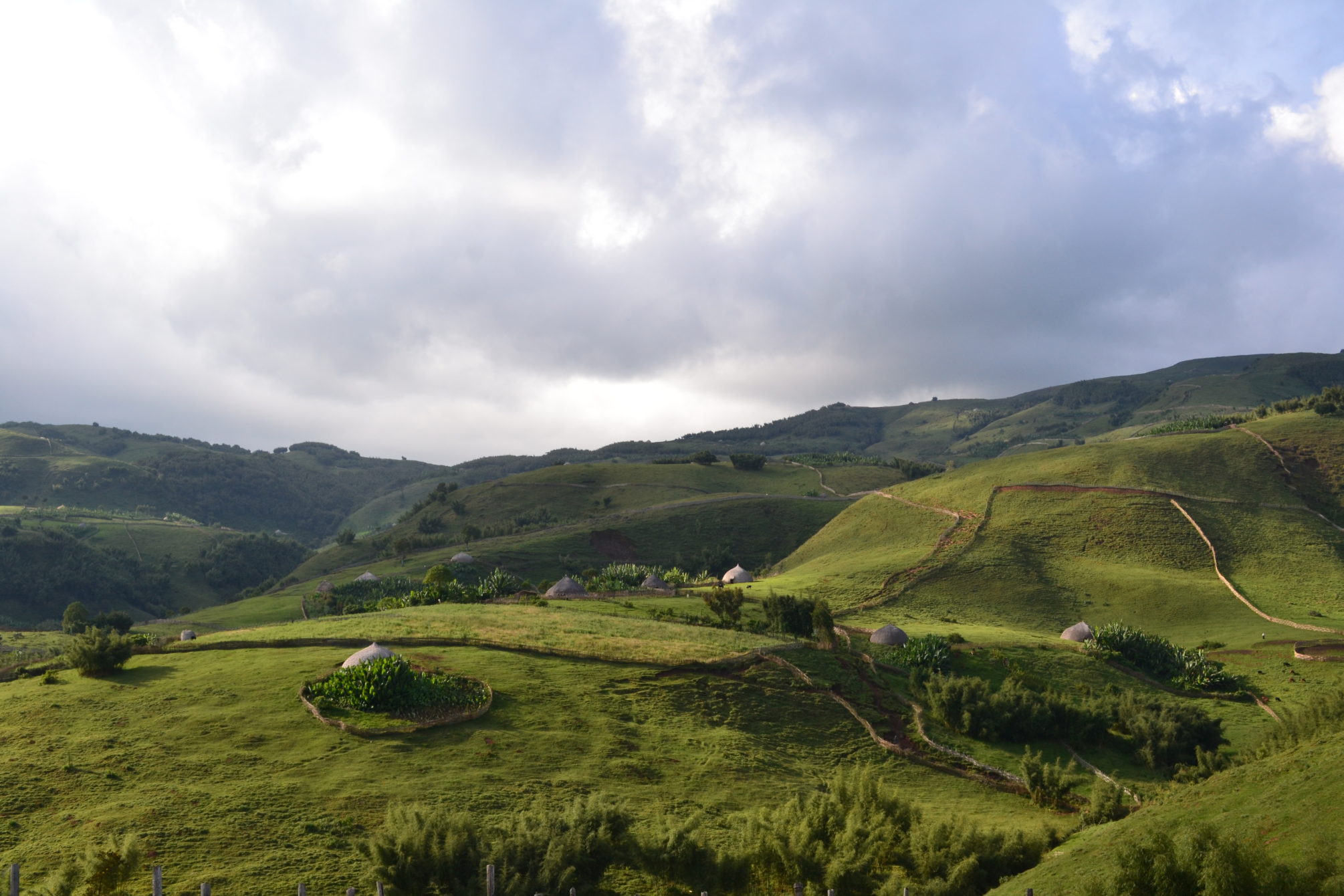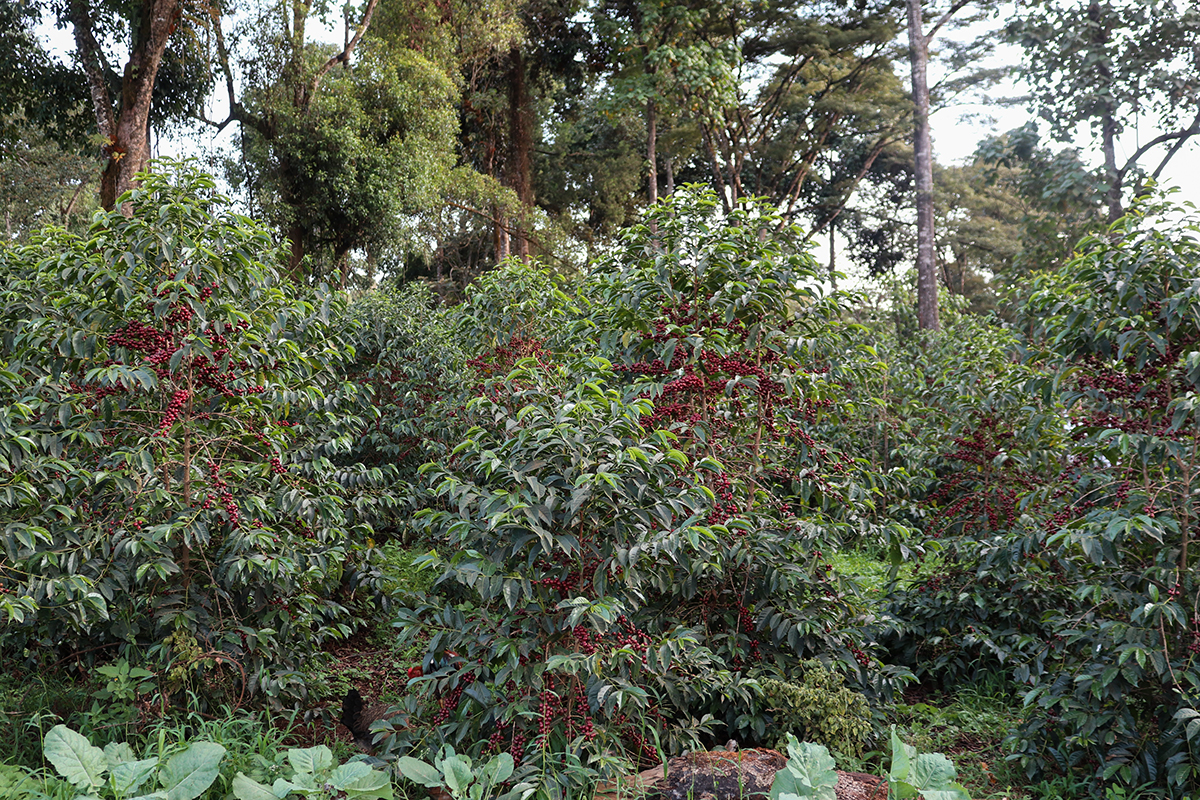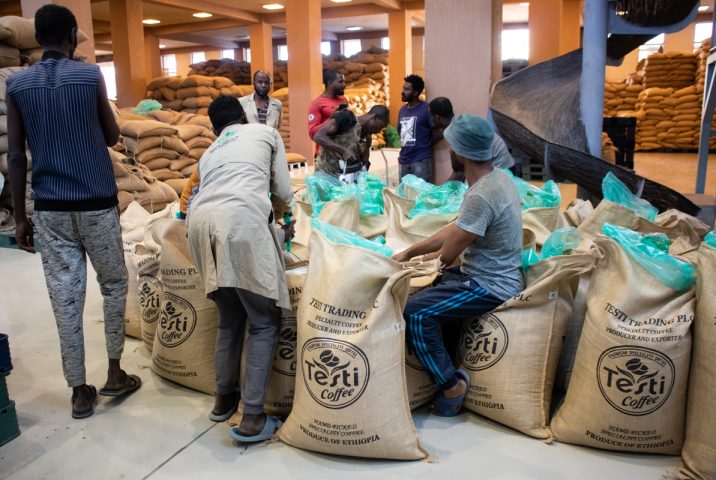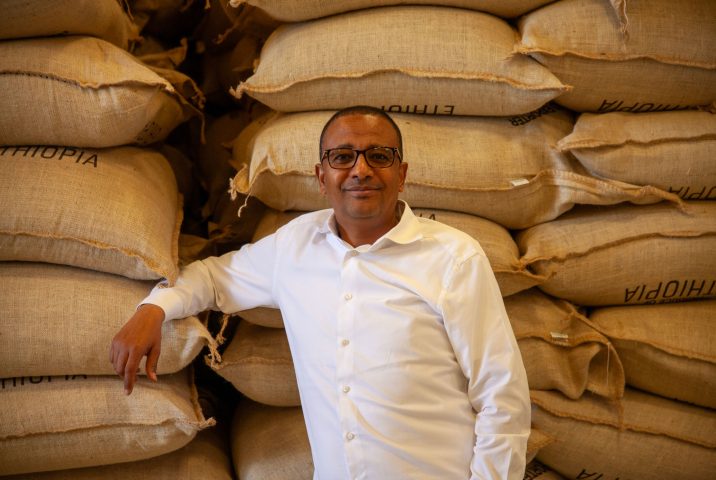Ethiopia
Ethiopia produces some of the most complex, elegant and nuanced coffees in the world, and some of the most sought-after in the industry. They’re much like the finest champagne: refined, multilayered and simply exquisite.
Ethiopia is widely acknowledged as the birthplace of coffee, with recent DNA testing confirming that it is here that the Arabica species of coffee originated. Accordingly, the country has the most genetically diverse population of wild coffee trees on the planet, and an ideal environment for the crop to grow in.
Ethiopia is Africa’s top coffee producer, with an estimated 15 million people employed in the production and export of the crop. An average of 3.5 million bags of coffee are exported annually, which accounts for up to 5% of the country’s GDP. Ethiopia is one of few coffee producing countries where the local population consumes a significant part of their coffee production themselves, with a further 3.5 million bags of coffee consumed at home.
History of Coffee in Ethiopia
The growing, processing, and drinking of coffee has been a part of everyday life in Ethiopia for centuries, ever since the original trees were discovered growing in the wild. Exact records are hard to come across, but it is estimated that the crop began to be exported in the 14th century and has remained intrinsic to the country’s economy since. Once the Ethiopian empire was formed in the late 18th century, coffee production and its export expanded further and became more centralised.
The country has experienced much political turmoil since, but improving coffee’s profitability has remained a priority to all governments in power. As coffee became more commercialised in the 20thcentury, the government developed a system for classifying and grading coffee, eventually founding the National Coffee Board of Ethiopia in the 1957. This also marked the start of the coffee cooperative movement. To further improve consistency and reliability across the country’s coffee, the Jimma Agricultural Research Center (JARC) was established in 1967, and was tasked with the development of high-yielding, resistant coffee varieties and their distribution among farmers. These in turn grow them alongside local landrace varieties that have been identified, classified and carefully selected over time, dispelling the myth that all Ethiopian coffee is wild or of unknown varieties.
In an effort to add transparency to the country’s economy, and solve the boom-and-bust cycle that coffee farmers had become used to experiencing, the government founded the Ethiopian Commodity Exchange (ECX) in 2008. The first of its kind in Africa, the trading platform is considered as an equalising market force for sellers and buyers, as it gives coffee-growers a reliable indication of how much money they can receive for their crop every year. On arrival at the ECX, all coffee is repackaged and categorised according to cup profile and quality, before being auctioned to the highest bidder. For years, this resulted in a lack of traceability in the market, as it made determining the precise and accurate origin of each coffee and the people who grew it impossible to obtain.
However, when the exchange moved to an electronic platform in 2018, a barcode system was introduced to ensure each bag of coffee harvested could be traced back to its original grower. Subsequently, producers with privately-owned washing stations were allowed to sell their processed coffees directly to buyers, bypassing the ECX and creating opportunity for more people to export traceable coffees. Through this more direct model, coffee buyers can fully trace their selected lots directly to the washing stations, which then allows stations to pay a second dividend back to the farmers when the coffees are sold at a premium. This positive change encourages farmers to deliver better-quality cherries and washing stations to invest in producing higher-quality lots.
Production Systems in Ethiopia
There are four main coffee production systems in Ethiopia:
- Forest coffee is harvested from coffee trees growing wild without any human intervention; this makes up around 5% of the coffee production in the country.
- Semi-forest coffee is a system that allows farmers to manage the different varieties grown in a forest, and to thin canopies and trim underbrush as needed. This production system makes up around 25% of coffee production in the country and is most common in the southwest. Farmers who produce coffee under this method are very strategic about the varieties they grow, usually basing this decision on how the coffees perform in their region.
- Estate coffees are generally from medium to large farms – of up to hundreds or thousands of hectares in size – owned by investors and mainly located in the southwest. This accounts for around 10% of the coffee in Ethiopia.
- Garden coffee is the main coffee production system, where coffee is grown on very small lots around a grower’s home. A large majority of these growers have just a few hundred trees from both local landrace and JARC varieties, on less than a hectare of land. Garden coffee makes up an estimated 50% of the total production in Ethiopia, and it is common across all growing regions.
Key Coffee Growing Regions
Ethiopia has several coffee-growing regions, dispersed across its 11 political regions (the equivalent of a state) and 63 zones (a region’s subdivision). Knowing how to label Ethiopian coffees can be challenging, as there have been many changes to the name places and classifications since the current form of government was established in 1995. Historically, coffees have been labelled according to their traditional coffee region (which are often distinct from the political region they are in) and the corresponding flavour profile, but recently the coffee industry has been transitioning away from this practice. Where possible, we trace coffees to the woreda (administrative district) and kebele (village) where each lot was grown and processed. Melbourne Coffee Merchants works in the following political zones:
GUJI
The Guji zone was established as a unique production area in 2002. It is located in central-south Ethiopia, in the political region of Oromia and is named after the local Oromo people. Coffees from Guji were previously classified as being part of the ‘Sidama’ coffee region (not to be confused with the Sidama political region), one of Ethiopia’s three trademarked coffee region. However, more recently they have been separated from this classification and recognised for their unique cup profiles. This distinctive cup profile is a result of the combination of elements in this production area, including high altitudes, rich, fertile soil, and the widespread introduction of JARC coffee varieties along with local landrace varieties.
Guji is bordered to the south and west by the Borena Zone of Oromia, to the north by the Sidama political region and the Southern Nations, Nationalities, and People’s Region (SNNPR), and to the east by the Somali political region. Coffees that are classified as ‘Gujis’, originate from the woredas (administrative districts) of Adoola Redi, Uraga, Kercha, Bule Hora, and Shakisso.
WEST ARSI
The West Arsi Zone is located in central-eastern Ethiopia, in the Oromia political region and is named after the Arsi Oromo people. Historically, coffee from West Arsi has also been classified as ‘Sidama,’ even though the Zone is not within the Sidama political region. West Arsi has begun to distinguish itself in recent years, largely due to the Zone’s excellent results in the country’s Cup of Excellence competition. Part of the West Arsi Zone covers Ethiopia’s Great Rift Valley, which contains several mountains, volcanoes and great lakes. Most of the region’s specialty-grade coffee comes from the valley’s highlands, where humidity is high and temperatures are relatively cool.
West Arsi is bordered to the west by the Sidama political region, to the south by the Guji Zone, and to the west by Arsi and the ‘Harrar’ coffee region, the second of the country’s three trademarked coffee regions. The Zone is home to the Nensebo woreda, a region that is well-regarded among specialty coffee buyers.
GEDEO
The Gedeo Zone is located in southwest Ethiopia, in the SNNPR political region, and is named after the Gedeo people. Historically, coffee from Gedeo has been classified as “Yirgacheffe,” its most famous coffee-growing woreda, and the country’s third trademarked region. With average temperatures between 15-18oC and healthy annual rainfalls, Gedeo is well-suited to coffee-growing. Most coffee is part of a family’s ‘coffee garden,’ and grows alongside other food crops in environments nearly free of fertilisers and pesticides. These lots grow in iron-rich, acidic soils and receive shade from native trees such as Cordia Africana, Acacia, and Ensete trees.
Gedeo is bordered on all sides by the Oromia political region, except for its north, where it is bordered by the Sidama political region. It includes well-known coffee-growing woredas such as Yirgacheffe, Kochere and Gedeb.



